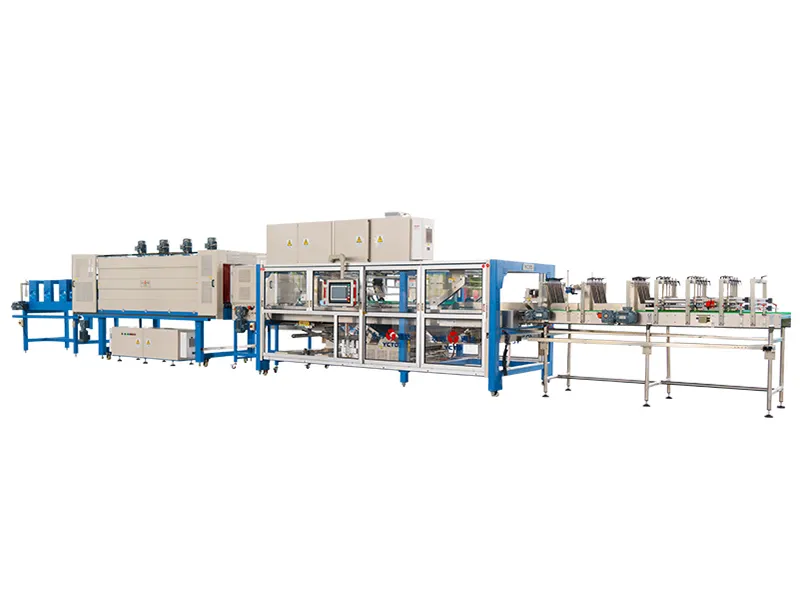Transforming Modern Industries Through Advanced Material Handling
The evolution of industrial processes has been dramatically accelerated by conveyor automation, revolutionizing how businesses handle materials, products, and workflows. This transformative technology has become the backbone of efficient operations across numerous sectors, delivering unprecedented levels of productivity and precision. As industries worldwide embrace digital transformation, conveyor automation stands at the forefront of manufacturing and distribution innovation.
The impact of automated conveyor systems extends far beyond simple material transportation. These sophisticated systems now incorporate advanced sensors, AI-driven controls, and seamless integration capabilities that enable businesses to optimize their entire operation. With the global material handling equipment market projected to reach $41.7 billion by 2025, understanding which industries can benefit most from this technology has become crucial for business leaders and operations managers.

Manufacturing and Assembly Operations
Automotive Manufacturing Excellence
The automotive industry has long been a pioneer in conveyor automation adoption. Modern vehicle assembly plants utilize complex conveyor networks that transport components through various assembly stages with precise timing and positioning. These systems not only move heavy vehicle parts but also synchronize with robotic assembly stations, quality control checkpoints, and painting facilities.
Conveyor automation in automotive manufacturing has evolved to include smart sensing capabilities that track each vehicle's progress through the assembly line, automatically adjusting speeds and routing based on real-time production demands. This level of automation has helped automotive manufacturers reduce assembly time by up to 70% while maintaining exceptional quality standards.
Electronics and Technology Production
In electronics manufacturing, conveyor automation plays a crucial role in maintaining clean room conditions and ensuring precise component handling. Advanced conveyor systems equipped with electrostatic discharge (ESD) protection transport delicate electronic components through various assembly and testing stages. These systems integrate seamlessly with automated optical inspection (AOI) equipment and other quality control measures.
The ability to maintain consistent speeds and environmental conditions throughout the production process has made conveyor automation indispensable in electronics manufacturing. Companies implementing these systems have reported up to 40% improvement in throughput and significant reductions in component damage during handling.
Warehouse and Distribution Centers
E-commerce Fulfillment Operations
The explosive growth of e-commerce has made conveyor automation essential for modern fulfillment centers. These facilities utilize sophisticated conveyor networks that integrate with automated storage and retrieval systems (AS/RS), sorting equipment, and packaging stations. The result is a highly efficient operation capable of processing thousands of orders per hour with minimal human intervention.
Leading e-commerce companies have implemented conveyor automation solutions that include intelligent routing algorithms, allowing packages to be sorted and directed to specific shipping zones automatically. This level of automation has enabled fulfillment centers to achieve processing speeds up to five times faster than manual operations.
Cold Chain and Temperature-Controlled Storage
Temperature-sensitive industries such as food and pharmaceuticals rely heavily on conveyor automation to maintain product integrity throughout the storage and distribution process. Specialized conveyor systems designed for cold environments ensure consistent product flow while minimizing the time items spend outside temperature-controlled zones.
Modern cold chain facilities utilize conveyor automation systems equipped with thermal sensors and automated doors, creating seamless transitions between different temperature zones. These systems have helped reduce product loss due to temperature variations by up to 80% while increasing handling efficiency.
Food and Beverage Processing
Production Line Integration
The food and beverage industry has embraced conveyor automation to meet strict hygiene standards and increase production efficiency. Modern processing plants use specialized conveyor systems designed for easy cleaning and sanitization, while maintaining high-speed operation. These systems often incorporate features such as automated washing stations and UV sanitization points.
Conveyor automation in food processing has evolved to include advanced tracking capabilities that maintain product traceability throughout the production process. This has become increasingly important for compliance with food safety regulations and quality control requirements.
Packaging and Palletizing Solutions
At the end of food and beverage production lines, conveyor automation plays a crucial role in packaging and palletizing operations. Advanced systems coordinate multiple conveyor lines to sequence products for efficient packaging and stack finished goods onto pallets. This level of automation has helped companies achieve packaging speeds of up to 200 units per minute while maintaining perfect stack patterns.
The integration of vision systems and robotic palletizers with conveyor automation has revolutionized end-of-line operations, reducing labor costs and improving workplace safety. Companies implementing these solutions have reported labor cost reductions of up to 60% in their packaging operations.
Mining and Raw Materials Processing
Bulk Material Handling
The mining industry relies heavily on conveyor automation for efficient bulk material transportation. Modern mining operations utilize advanced conveyor systems capable of moving thousands of tons of material per hour across challenging terrains and long distances. These systems incorporate sophisticated monitoring equipment to prevent belt wear and ensure optimal operation.
The implementation of smart conveyor systems in mining has led to energy savings of up to 30% compared to traditional transport methods, while significantly reducing the environmental impact of operations.
Processing Plant Integration
In mineral processing plants, conveyor automation facilitates the seamless movement of materials through various stages of crushing, screening, and separation. Advanced control systems maintain optimal feed rates and distribution, ensuring maximum processing efficiency and product quality.
The integration of conveyor automation with plant control systems has enabled real-time adjustments to processing parameters, resulting in yield improvements of up to 15% and reduced downtime.
Frequently Asked Questions
How quickly can conveyor automation systems be implemented in existing facilities?
Implementation timelines typically range from 3-6 months for basic systems to 12-18 months for complex installations. The exact duration depends on factors such as facility size, system complexity, and integration requirements. Most providers offer phased implementation approaches to minimize operational disruption.
What level of maintenance do automated conveyor systems require?
Modern conveyor automation systems are designed for high reliability and low maintenance. Typical maintenance requirements include regular inspections, belt tensioning, and periodic component replacement. Many systems now include predictive maintenance capabilities that alert operators to potential issues before they cause downtime.
How do automated conveyor systems impact workplace safety?
Conveyor automation significantly improves workplace safety by reducing manual handling requirements and implementing advanced safety features such as emergency stops, guard rails, and safety sensors. Companies implementing these systems typically report a 50-70% reduction in handling-related incidents.

